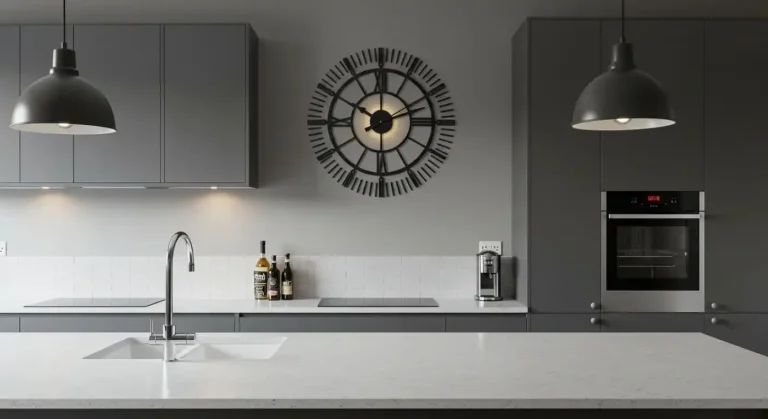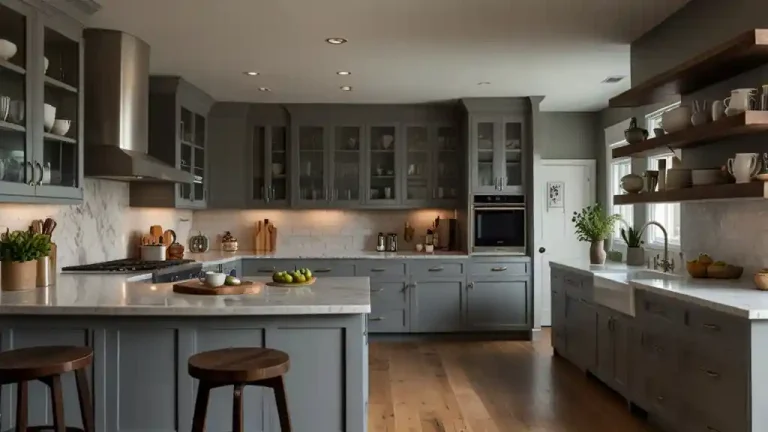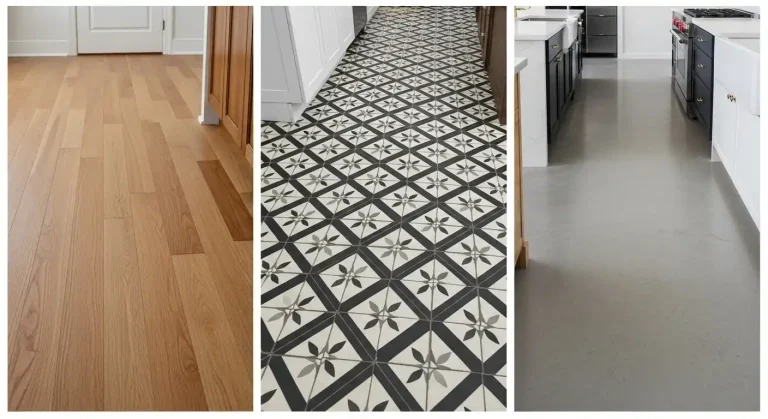Cheap Pantry Organization Ideas: 22 Affordable Fixes for Every Home
A neat pantry doesn’t have to cost a lot. Try these cheap pantry organization ideas to save space and money while keeping things in order.
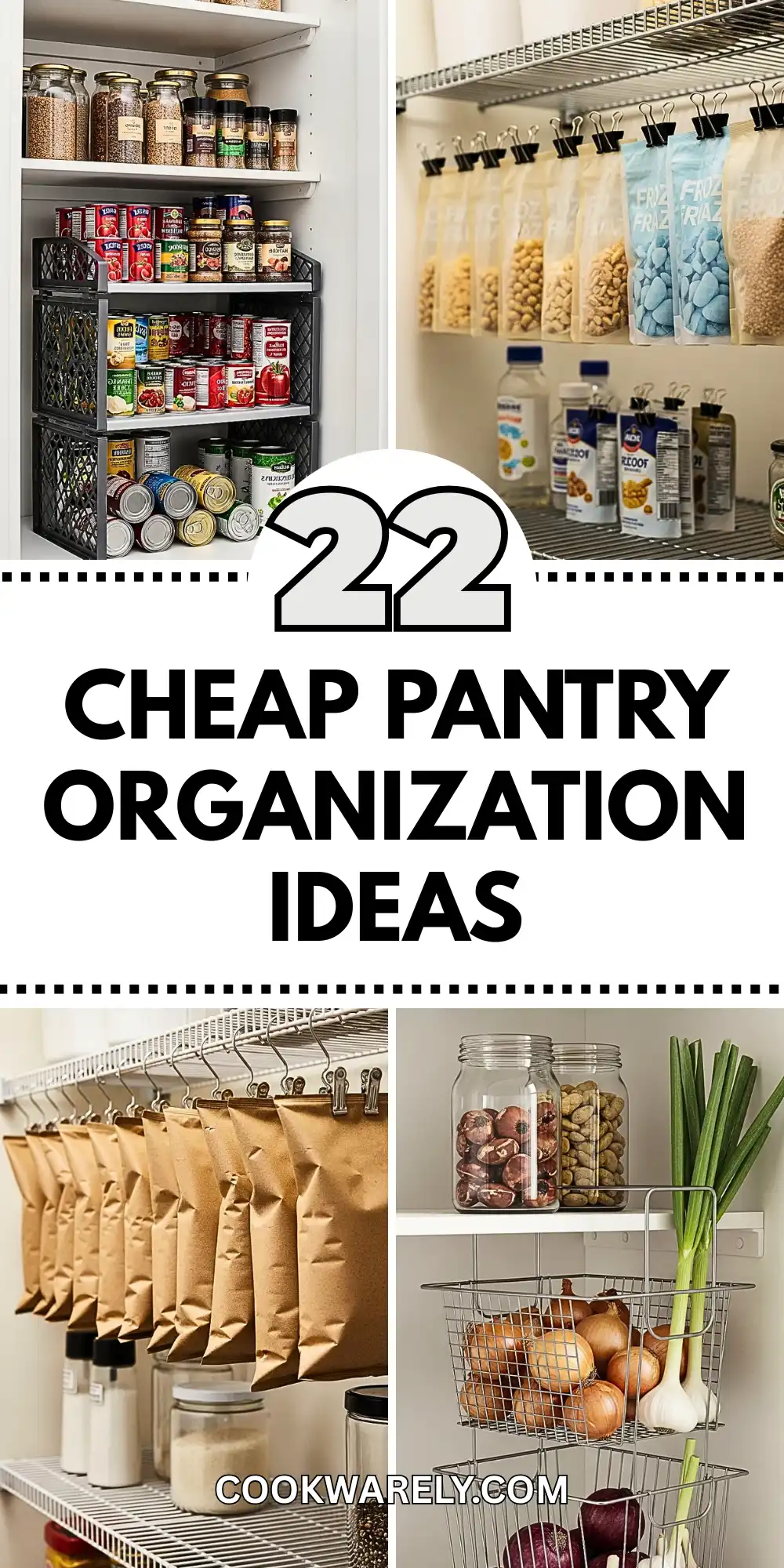
Let’s be honest—an unorganized pantry can easily turn into a black hole of forgotten snacks, expired cans, and half-empty boxes.
But here’s the best part: bringing order to your pantry doesn’t require a big budget or a fancy makeover.
With just a little creativity and some low-cost solutions, you can create a pantry that works for you and looks great too.
🎄 Christmas & Year-End Amazon Deals !
Don’t miss out on the best discounts and top-rated products available right now!
*As an Amazon Associate, I earn from qualifying purchases.
Whether you have a small cupboard or a walk-in pantry, these tips will help you make the most of your space.
To get you inspired, we’ve gathered 22 cheap pantry organization ideas that are practical, stylish, and easy to pull off.
Foundational Principles of Cheap Pantry Organization

Before a single organizer is bought or a cardboard box is cut, a successful pantry transformation begins with two essential steps.
These foundational principles prove that the most effective organization is born from a mindful approach, not a high budget.
The Decluttering Dive: A Crucial First Step
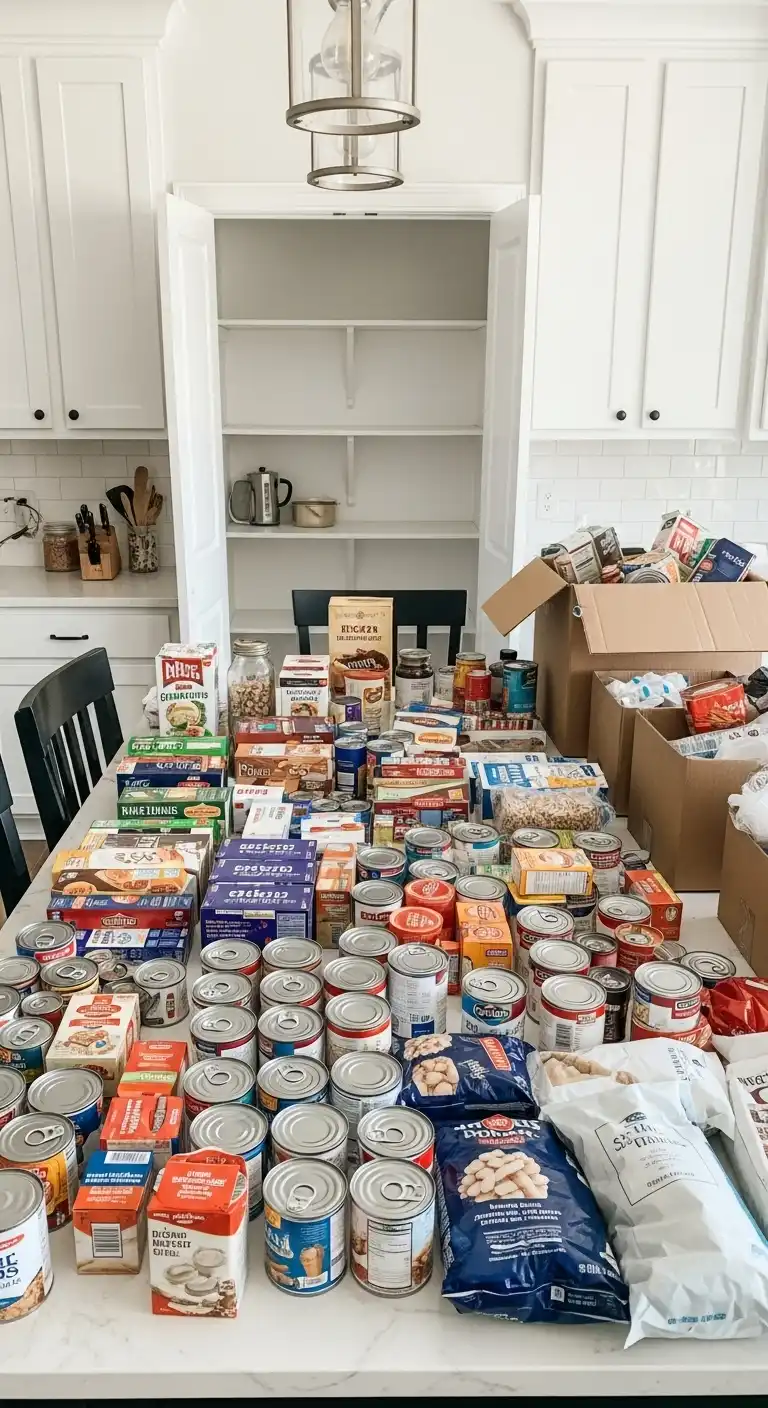
The journey to an organized pantry starts with a non-negotiable step: a full cleanout.
Emptying the pantry completely and setting up a staging area on a large table or island is the only way to get a true picture of what is being stored.
This initial action serves multiple purposes.
- First, it allows for a thorough wipe-down of all shelves, making it easier to clean up future spills.
- Second, it acts as an essential inventory check. This is the moment to discard items that are out of date and to set aside non-perishable foods for donation to a local food bank.
This process is more than a simple tidying exercise; it is a critical diagnostic tool for a household’s spending and food consumption habits.
By seeing everything laid out, individuals often discover duplicate purchases or an overabundance of certain items.
This realization is a key component of truly effective cheap pantry organization, as it directly addresses and helps combat the problem of food waste and overbuying.
It proves that the act of organizing is a pathway to saving money, which is the ultimate goal of a budget-friendly project.
Establish a Zone System for Everything
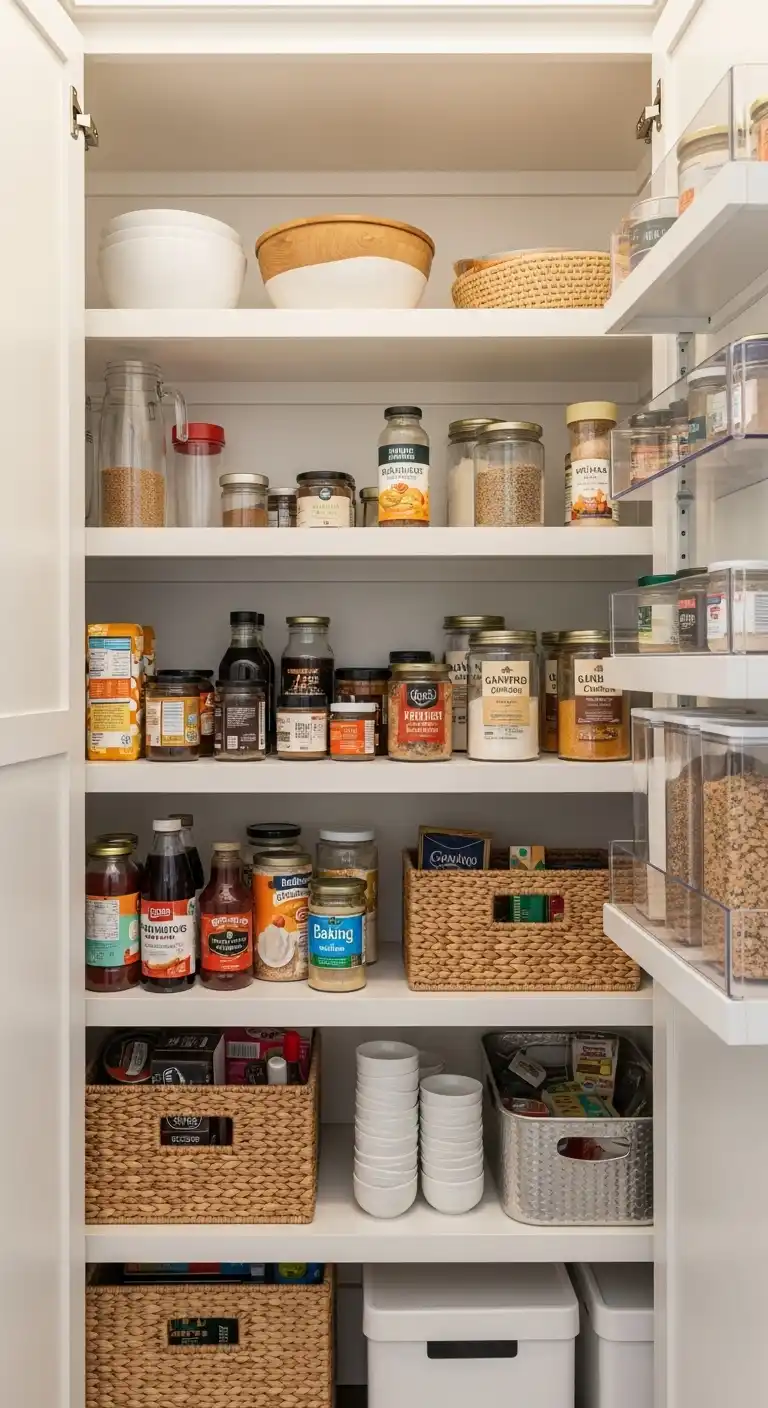
Once the pantry is empty and clean, the next step is to create a logical system for returning items.
Grouping similar items together is fundamental for a well-functioning space.
This means dedicating a specific zone for baking supplies, another for sauces, and a separate one for snacks.
🎄 Christmas & Year-End Amazon Deals !
Don’t miss out on the best discounts and top-rated products available right now!
*As an Amazon Associate, I earn from qualifying purchases.
This principle holds true whether working with a walk-in pantry, a small cabinet, or even a single shelf.
A zone system provides a predictable flow to the pantry.
When all spices are in one area and all baking ingredients are in another, meal preparation becomes significantly faster and more intuitive.
This structure also simplifies the shopping list process, as a quick glance at a designated zone can reveal exactly what is running low.
By establishing clear categories, the system reduces the cognitive load of having to remember where an item is kept.
It transforms a chaotic search into an intuitive, seamless experience, which is the hallmark of a system designed to be maintained.
Ingenious DIY Hacks with Repurposed Materials
The most truly budget-friendly solutions come from seeing potential in everyday items that might otherwise be thrown away or overlooked.
These clever hacks exemplify a savvy approach to pantry organization by turning waste into valuable storage solutions.
1. The Cardboard Box Can Dispenser

One of the most powerful and creative projects for cheap pantry organization is a DIY can dispenser made from a cardboard box.
This hack specifically targets the common problem of cans getting lost or stacked precariously on deep shelves.
The process is simple: take an inexpensive, flat-pack photo box, assemble one side, and then cut down the other side so that it is low enough to easily retrieve cans but high enough to prevent them from rolling out.
This creates a gravity-fed system that keeps cans neat, visible, and accessible.
🎄 Christmas & Year-End Amazon Deals !
Don’t miss out on the best discounts and top-rated products available right now!
*As an Amazon Associate, I earn from qualifying purchases.
This approach is particularly clever because it is completely customizable.
Cardboard is malleable and can be tailored to the exact dimensions of a shelf, creating a storage solution that a generic, store-bought product simply cannot match.
This kind of repurposing is not just about saving money; it is about creating a custom, high-function piece that is perfectly suited for a specific space, all while embracing a sustainable, no-cost approach.
2. Magazine Holders for Produce

Root vegetables like onions and garlic thrive outside of the refrigerator but can be difficult to store neatly.
They need airflow to prevent premature spoilage, and they tend to roll around shelves.
A simple and effective solution is to repurpose a wire or mesh magazine holder as a dedicated produce basket.
This hack showcases the value of looking beyond a product’s intended use.
The open-mesh design of a magazine holder provides the essential air circulation that onions and garlic require, while its upright, contained shape keeps them from scattering across the pantry floor.
By using an item designed for a completely different purpose, a person can create a vertical storage solution that saves shelf space and keeps produce fresh, all for a fraction of the cost of a custom-built storage bin.
3. Pants Hangers for Chip Bags
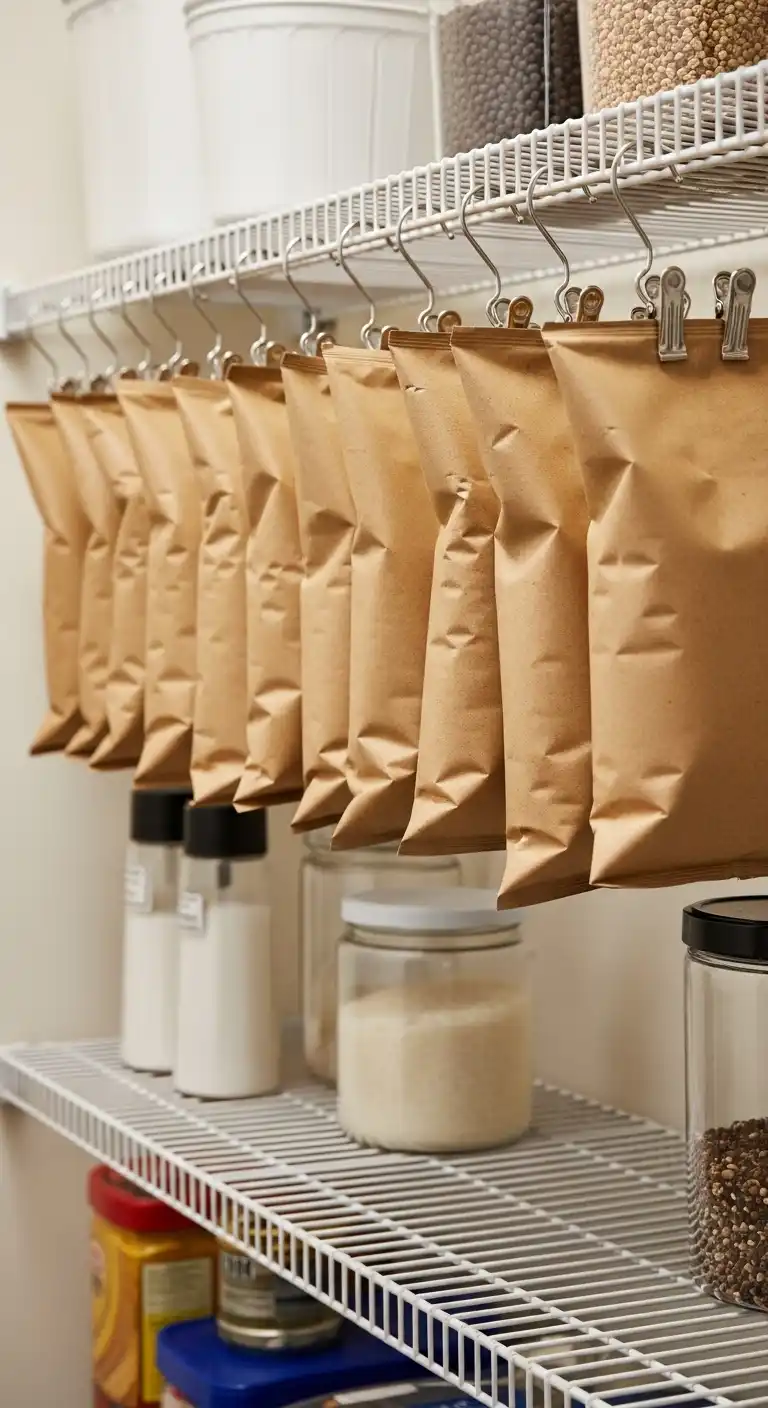
Chip bags are notoriously challenging to store.
They are bulky, hard to stack, and prone to getting squished or going stale.
A simple solution is to use a pants hanger with clips to hang them.
🎄 Christmas & Year-End Amazon Deals !
Don’t miss out on the best discounts and top-rated products available right now!
*As an Amazon Associate, I earn from qualifying purchases.
The clips secure the bag tightly, while the hanger allows the bag to be hung from a wire shelf, making it instantly visible and accessible.
This is a two-for-one solution that addresses both food preservation and accessibility.
The hanger not only keeps the bag neatly stored but also seals it closed, helping to keep chips fresh for longer.
It is a powerful illustration of how a single, pre-existing household item can solve multiple problems at once, turning a point of frustration into a simple and brilliant organizational win.
4. A Shoe Organizer on the Door
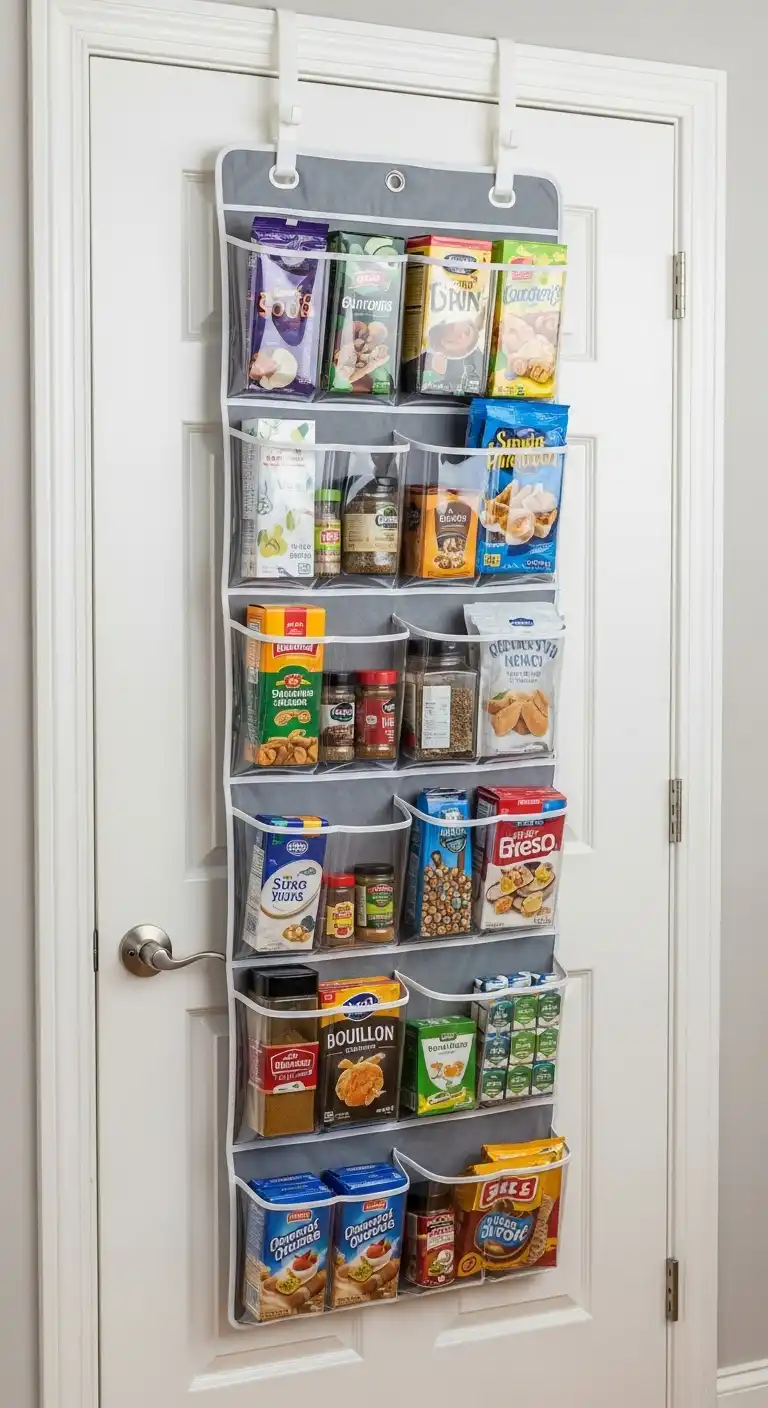
The back of the pantry door is often a completely underutilized surface.
Hanging a clear plastic over-the-door shoe organizer instantly transforms this space into vertical storage.
The small, clear pockets are perfect for storing items that often get lost in the depths of a pantry, such as small spice jars, snack bags, or bouillon cubes.
This hack is a masterclass in maximizing forgotten real estate.
The clear pockets make it easy to see and grab exactly what is needed without having to dig through bins.
It can even be used as a “grab-and-go” station for kids’ snacks, with parent-approved options placed at a height that is easy for them to reach.
This solution is far more flexible and inexpensive than installing a custom door rack, unlocking the full storage potential of a pantry’s forgotten surfaces.
5. Upcycle Glass and Mason Jars
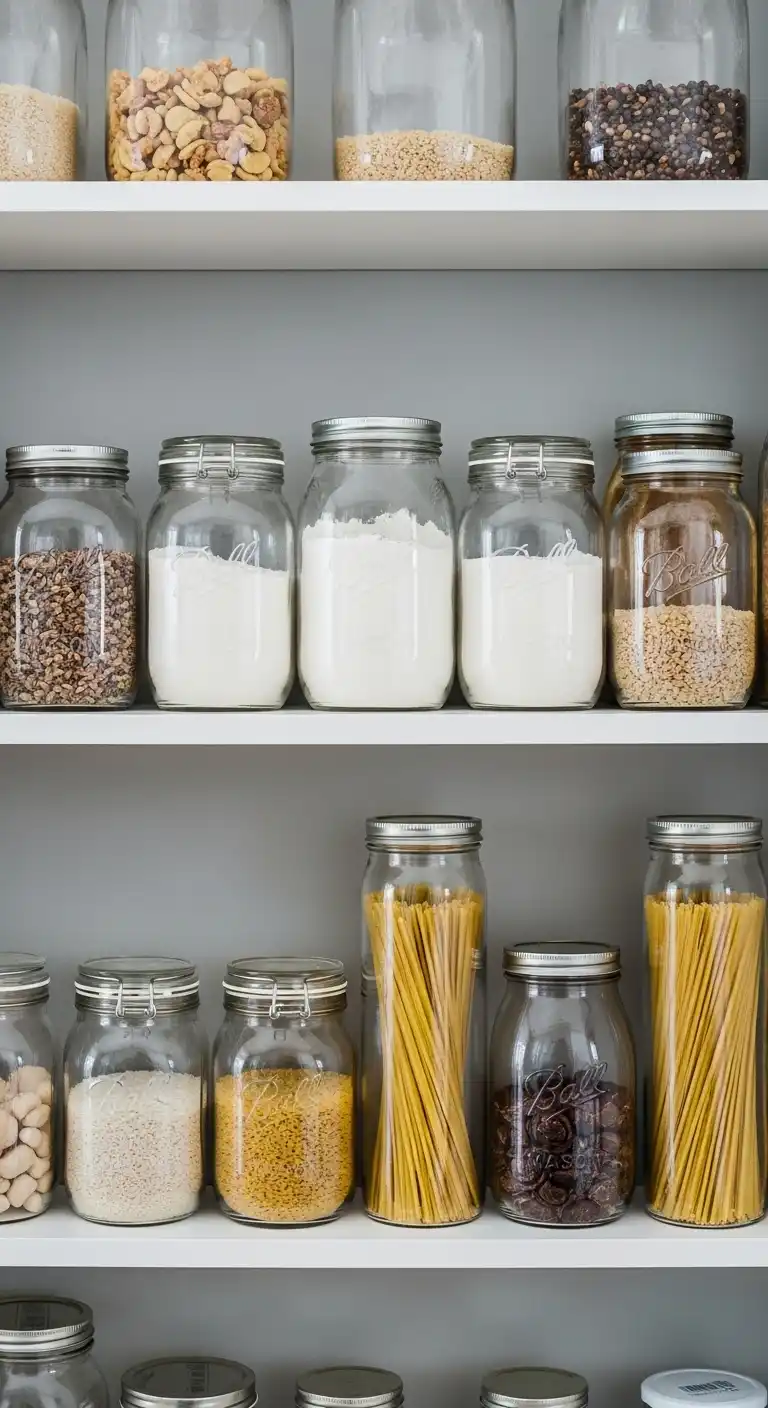
A classic and fundamental idea for a streamlined pantry is to transfer dry goods from their original, mismatched packaging into uniform, clear containers.
🎄 Christmas & Year-End Amazon Deals !
Don’t miss out on the best discounts and top-rated products available right now!
*As an Amazon Associate, I earn from qualifying purchases.
Old glass jars, mason jars, or even repurposed food containers are perfect for this.
Decanting items like rice, flour, pasta, and snacks into these see-through vessels creates a visually cohesive, streamlined look on the shelves.
This practice has benefits beyond just aesthetics.
Airtight lids on jars help keep pests away and ensure that food stays fresh for longer, which reduces food waste.
Furthermore, clear containers allow for a quick visual inventory check, so it is easy to see what is running low before heading to the store.
The small effort of decanting leads to a cascading series of benefits, from a sleeker appearance and pest control to smarter shopping habits.
6. Binder Clips as Shelf Hangers

Binder clips, a staple of any home office, can be repurposed for a clever pantry hack, especially in pantries with wire shelving.
By simply clipping a bag of food, such as frozen vegetables or chips, and hanging it from the edge of a wire shelf, a person can create a new storage location in an underutilized space.
This is a simple, no-cost way to make use of the vertical space that exists between shelves.
The clip serves as both a bag sealer and a hook, keeping the food fresh while freeing up valuable horizontal shelf space.
It is a powerful example of how a seemingly unrelated item can be a creative solution, demonstrating that effective cheap pantry organization can be found in the most unexpected places.
Strategic, Affordable Buys to Maximize Space
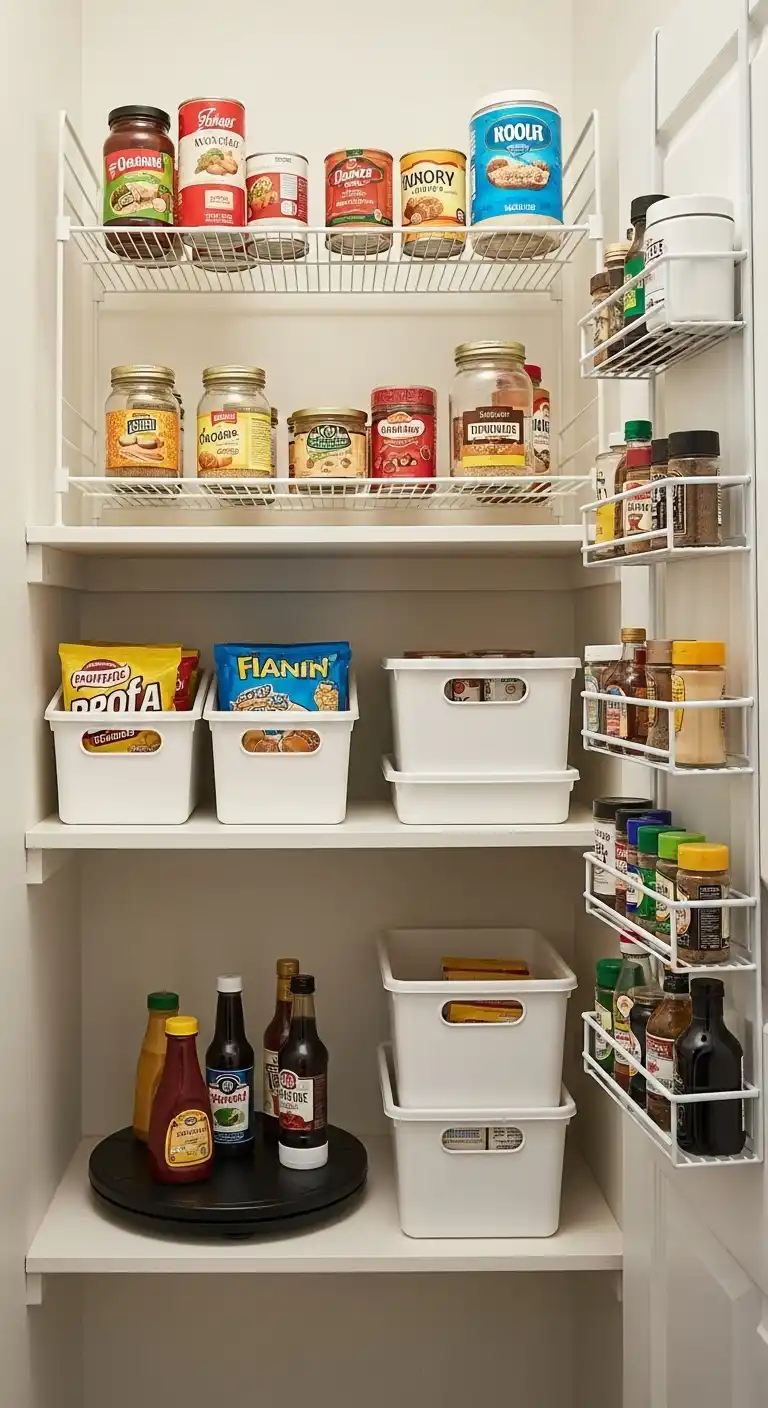
While DIY is a core component of budget-friendly organizing, some of the most frustrating pantry problems can be solved with strategic, low-cost purchases.
These affordable items are designed to make the most of every square inch.
7. Under-Shelf Baskets for Vertical Gain
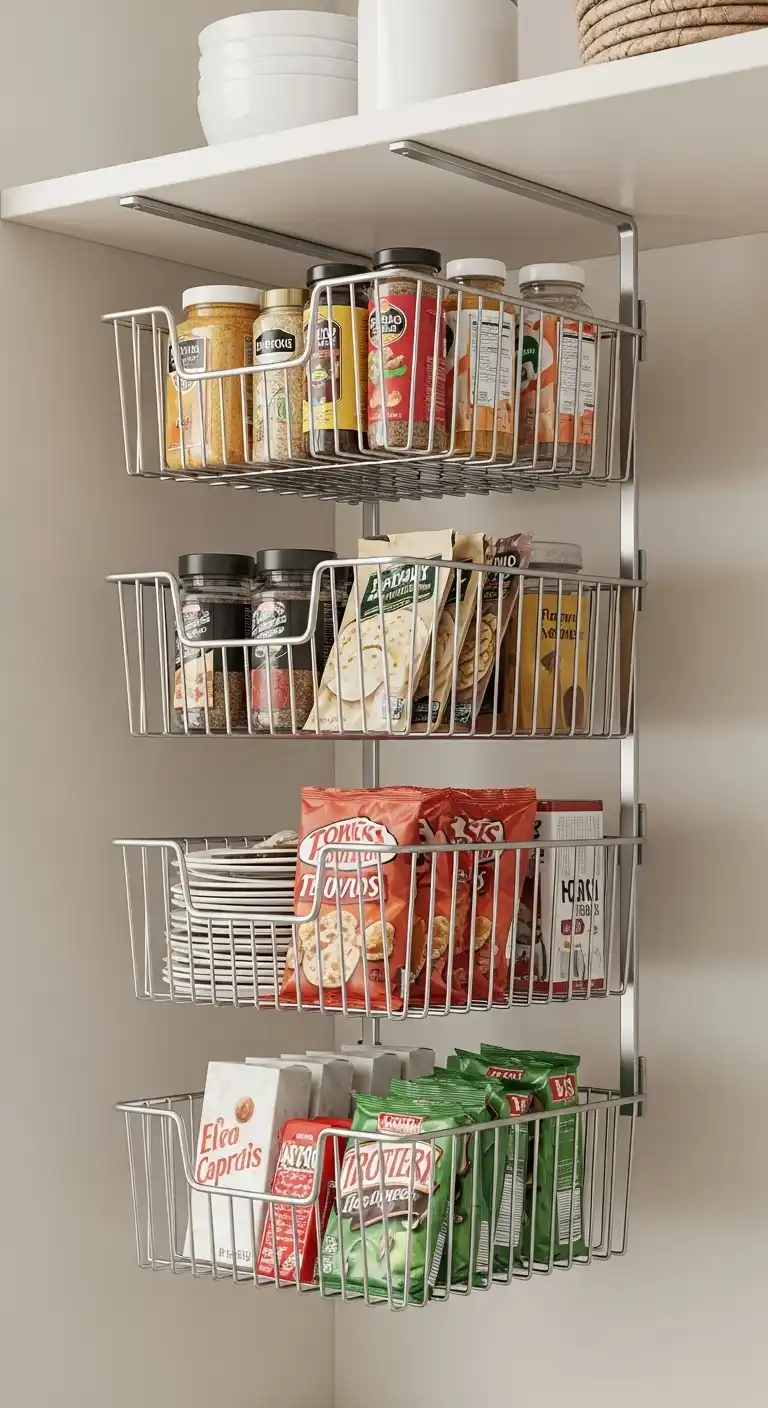
For pantries with tall shelves and a lot of wasted vertical space, under-shelf baskets are a game-changer.
🎄 Christmas & Year-End Amazon Deals !
Don’t miss out on the best discounts and top-rated products available right now!
*As an Amazon Associate, I earn from qualifying purchases.
These simple wire baskets clip onto the underside of an existing shelf, creating an additional layer of storage where none existed before.
This small investment instantly multiplies a pantry’s storage capacity and creates a perfect home for flat items that are easily lost, such as tortillas, spice packets, or small snack bags.
This product addresses the “negative space” in a pantry—the air above items that is often overlooked.
By making a smart, targeted purchase, one can solve a long-standing space problem and create a more efficient system without the need for a major overhaul.
8. Tiered Risers for Cans and Spices
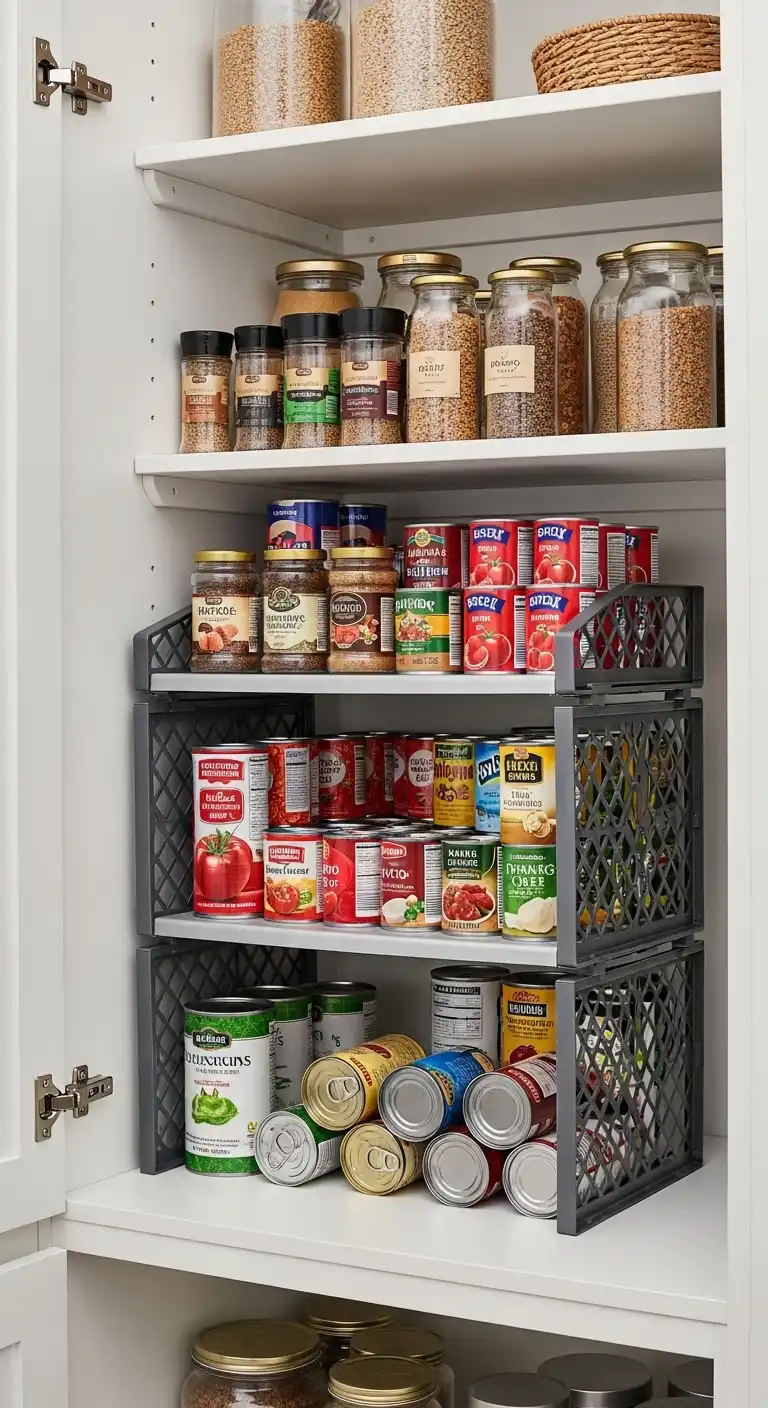
A pantry full of cans and spices can quickly become a disorganized mess, with items in the back becoming impossible to find.
A tiered or expandable shelf riser solves this problem by elevating items in the back, making everything visible at a glance.
This item transforms a static, hard-to-navigate space into an intuitive visual inventory system.
It prevents the “tumbling disaster” that can happen when cans are stacked on top of one another and eliminates the need to dig for a specific item, such as that elusive can of tomato paste.
This simple purchase removes a recurring point of frustration from a daily routine, making the search for ingredients seamless and calm.
9. The Power of the Lazy Susan
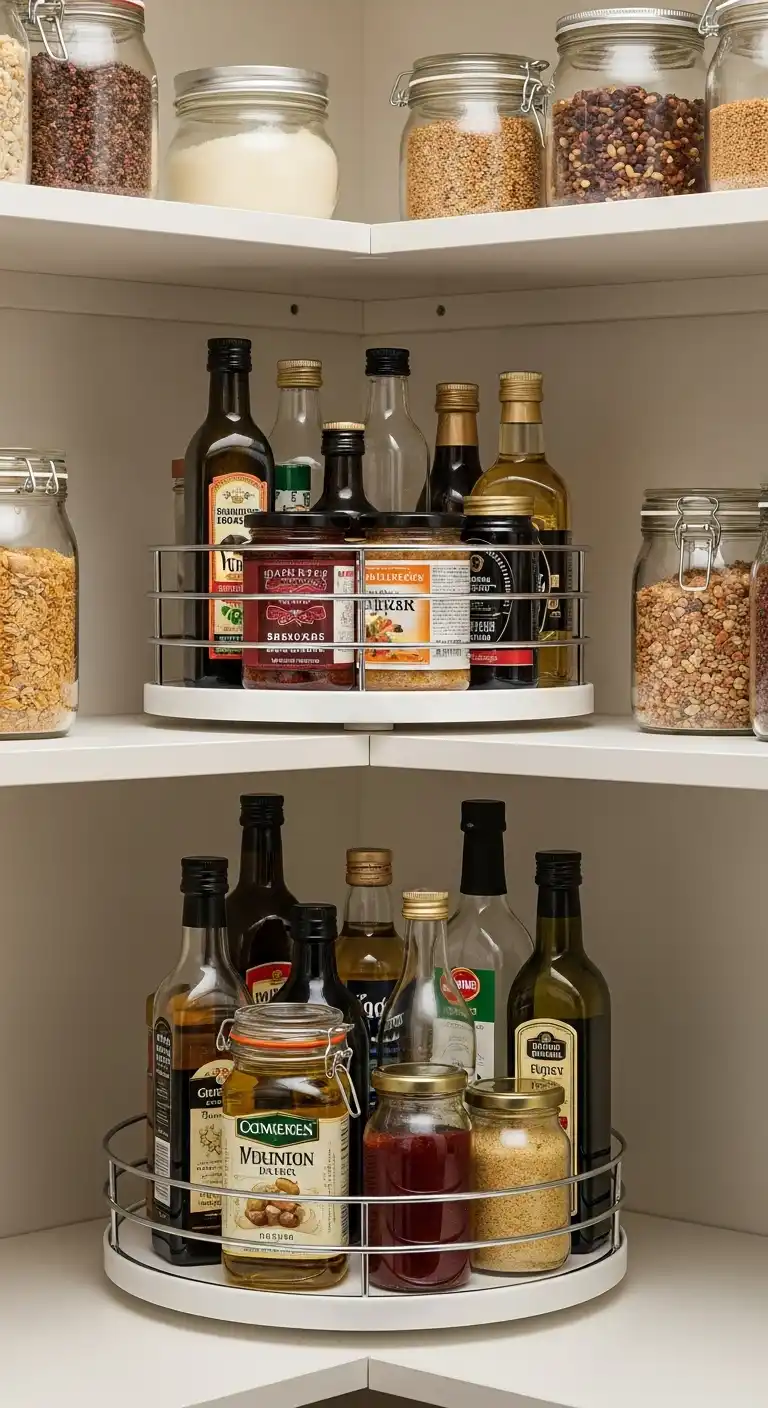
Corners and deep shelves are often “dead spots” of wasted space where jars and bottles get pushed to the back, never to be seen again.
A rotating Lazy Susan turns these dead zones into dynamic, highly functional real estate.
They come in a variety of styles and can even be found at dollar stores, making them an excellent tool for cheap pantry organization.
🎄 Christmas & Year-End Amazon Deals !
Don’t miss out on the best discounts and top-rated products available right now!
*As an Amazon Associate, I earn from qualifying purchases.
A Lazy Susan brings everything in a corner to the front with a simple spin, ensuring that bottles of oil, vinegar, or sauces are always within reach.
This simple, inexpensive item is a key player in maximizing every inch of space, proving that no corner is truly useless when the right tool is used.
10. Budget-Friendly Wire Baskets
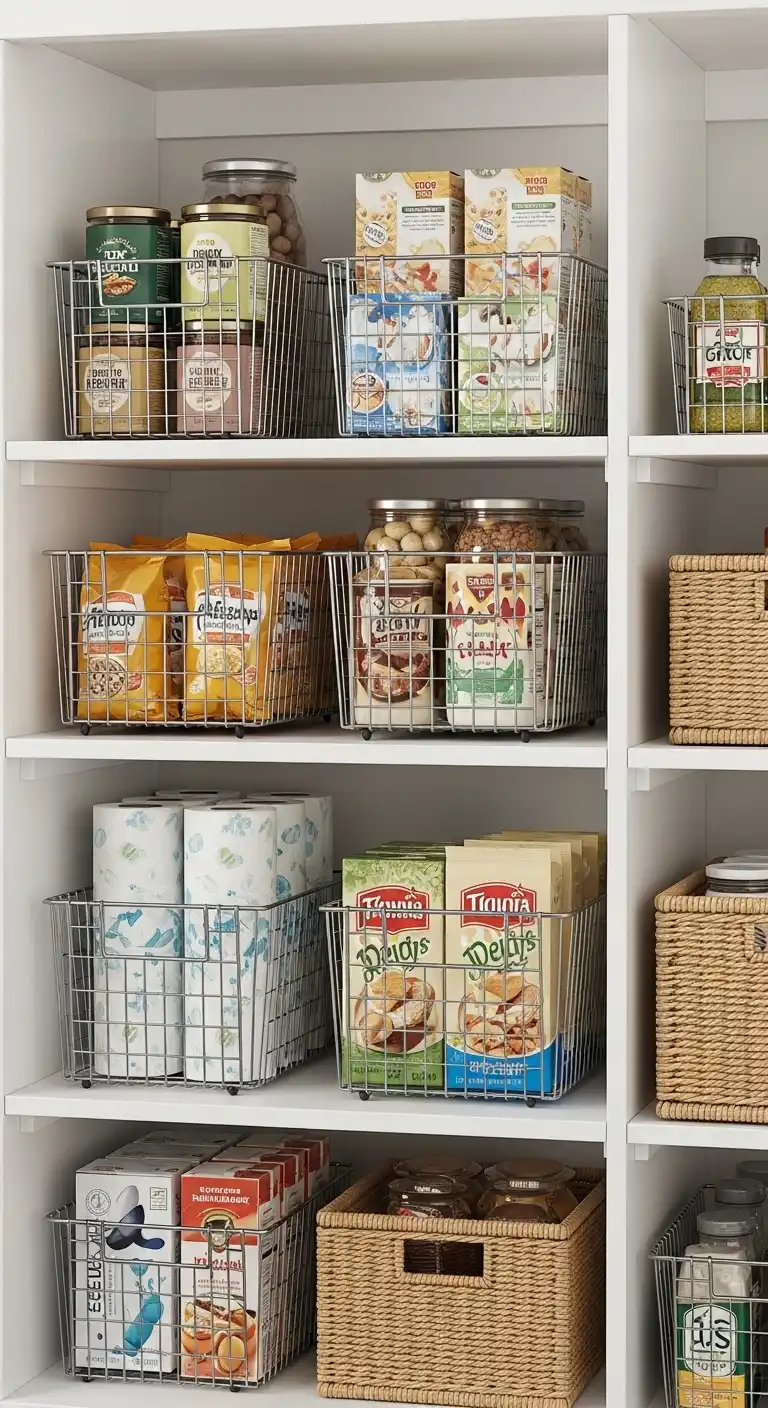
Wire or mesh baskets are a versatile and affordable staple for pantry organization.
They are perfect for corralling loose items like bags of chips, paper products, or produce.
They come in a variety of sizes and materials, including metal and wicker, to suit any style.
Baskets create a unified, clean look and prevent small items from getting lost.
The choice of material can be a functional decision.
For example, a wire basket provides essential airflow for storing items like potatoes and onions, while an opaque wicker basket can be used to hide less aesthetically pleasing packaged foods.
This proves that the right containers are not just for show; they are functional choices that impact air circulation, accessibility, and visual clutter.
11. A Rolling Cart for Mobility
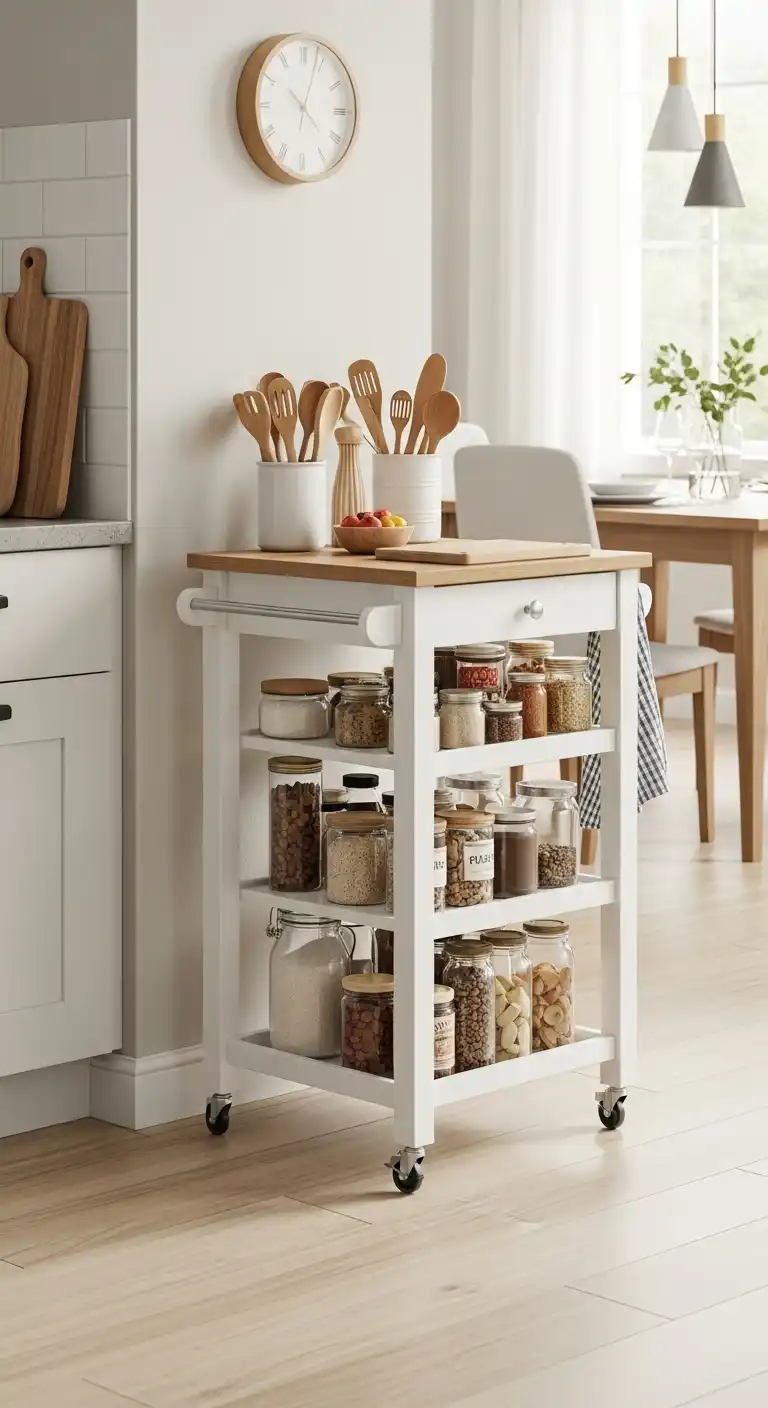
For kitchens with a small pantry or not enough counter space, a rolling kitchen cart can serve as a mobile, flexible pantry extension.
This versatile piece of furniture can be used to store kitchen gadgets, frequently used ingredients, or even a child-friendly snack station.
A rolling cart provides storage and frees up valuable counter space.
🎄 Christmas & Year-End Amazon Deals !
Don’t miss out on the best discounts and top-rated products available right now!
*As an Amazon Associate, I earn from qualifying purchases.
Its mobility allows it to be moved to different parts of the kitchen as a temporary prep station or to a dining area for easy access.
This item shows that when space is at a premium, thinking flexibly and adding modular storage can be a highly effective approach to organization.
12. Simple Shelf Inserts
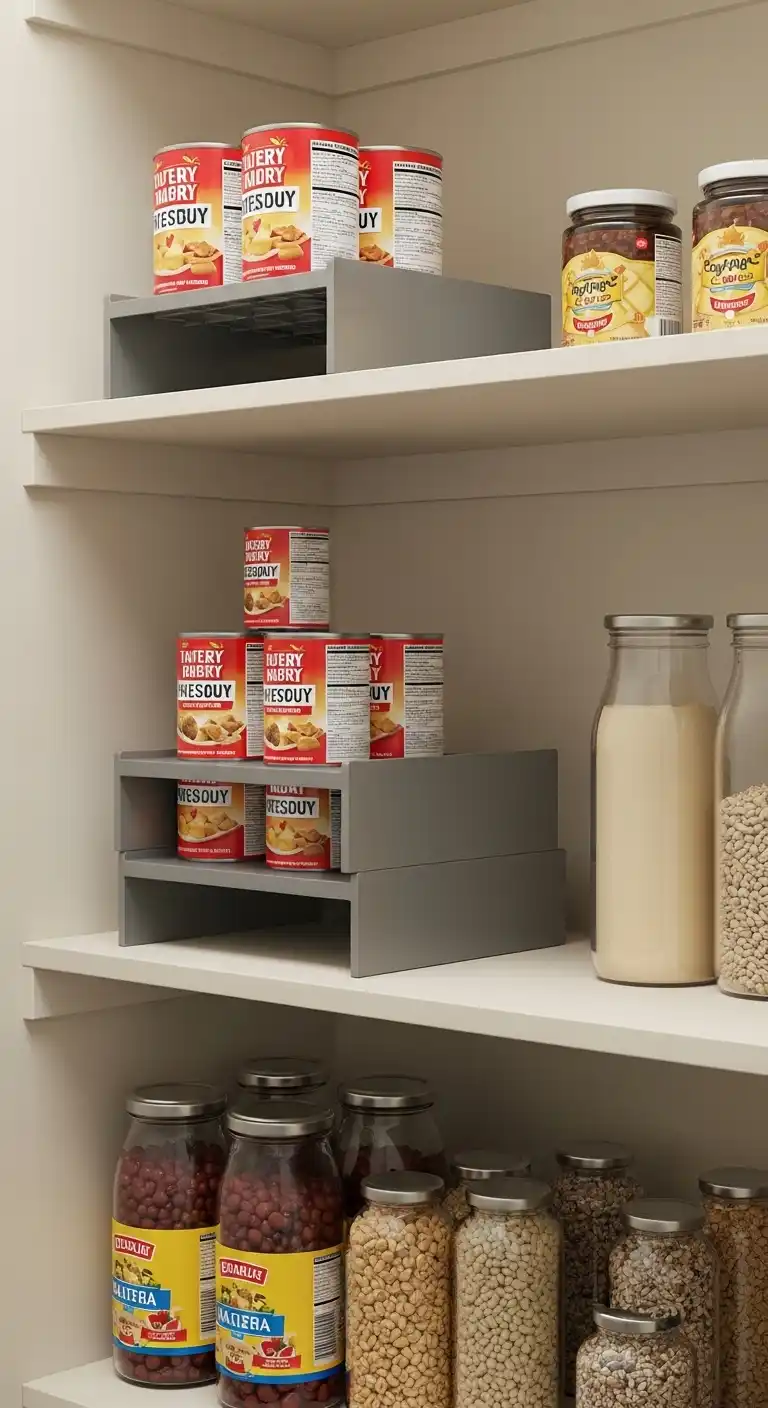
Many pantries have shelves that are spaced too far apart, leaving a lot of wasted vertical space.
Shelf inserts or risers are simple, stackable pieces of plastic or metal that create an additional level of storage on an existing shelf.
This small item addresses a fundamental design flaw in many pantries—a lack of flexible shelving.
It prevents the unsafe and messy practice of stacking cans or jars on top of one another and ensures that items at the back are visible and accessible.
This simple purchase makes a significant difference in a pantry’s capacity, highlighting that an organized space is not just about what is stored, but about how it is stored.
Themed Organization for Pantry Items
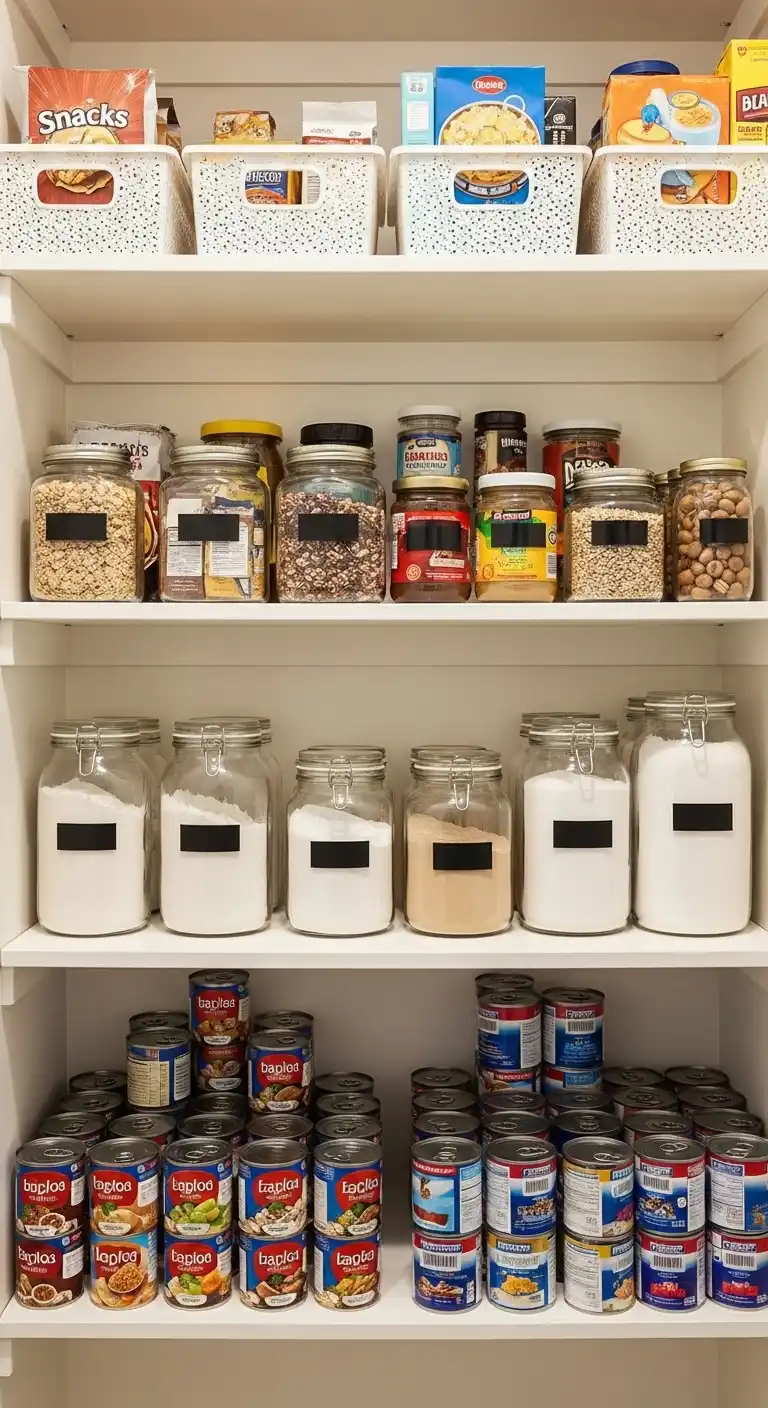
Applying the principles and tools of organization to specific categories of food can yield dramatic results.
These ideas focus on creating dedicated homes for the items that often cause the most chaos.
13. Cereal and Snack Containers
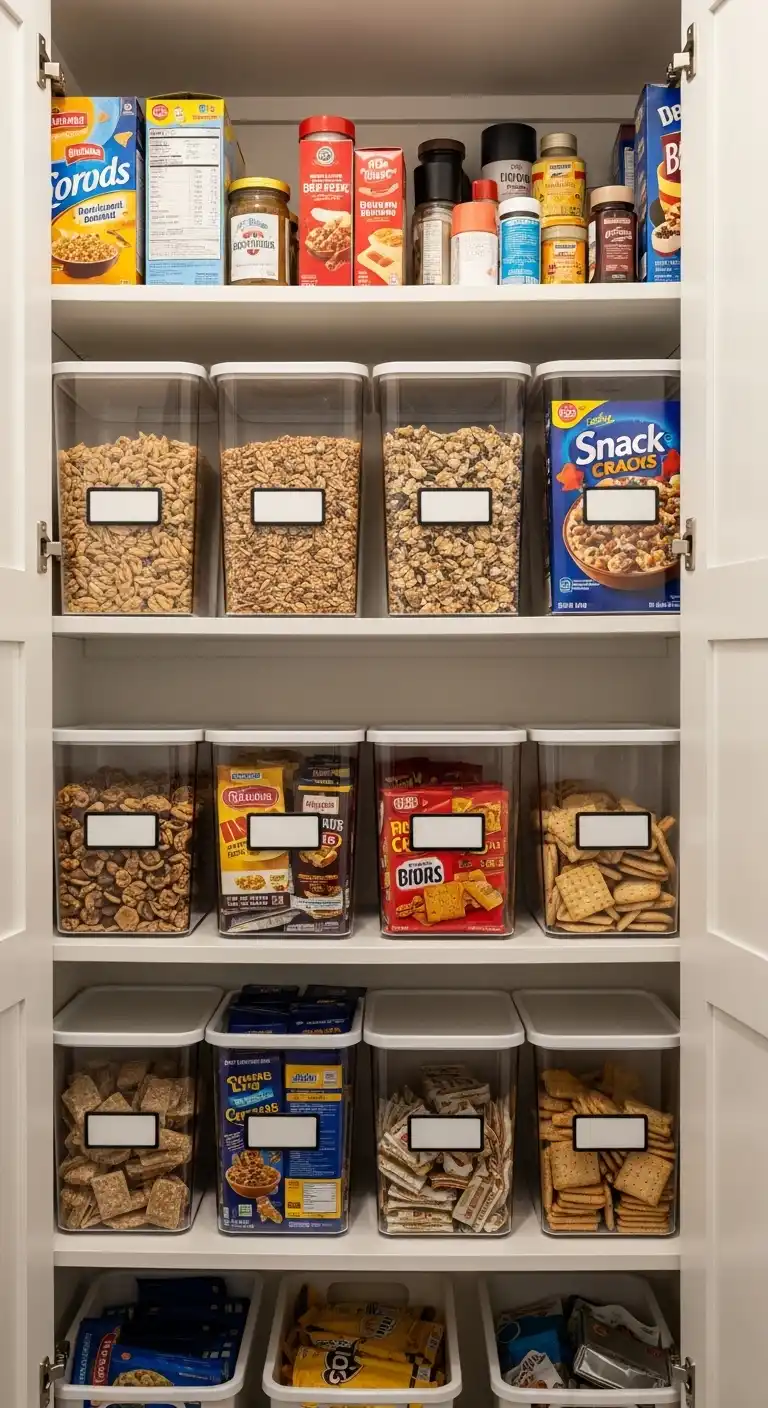
Cardboard cereal boxes and snack packages are bulky, visually jarring, and prone to going stale.
Transferring cereal, granola, and crackers from their original packaging into uniform, labeled bins instantly frees up a surprising amount of space.
This simple act creates visual calm and a sense of control over the pantry.
It not only frees up space but also creates a uniform, sleek look on the shelves and allows for stackable storage to maximize vertical space.
The psychological benefit of getting rid of mismatched branded packaging is just as important as the physical space it saves.
14. A Dedicated Snack Zone
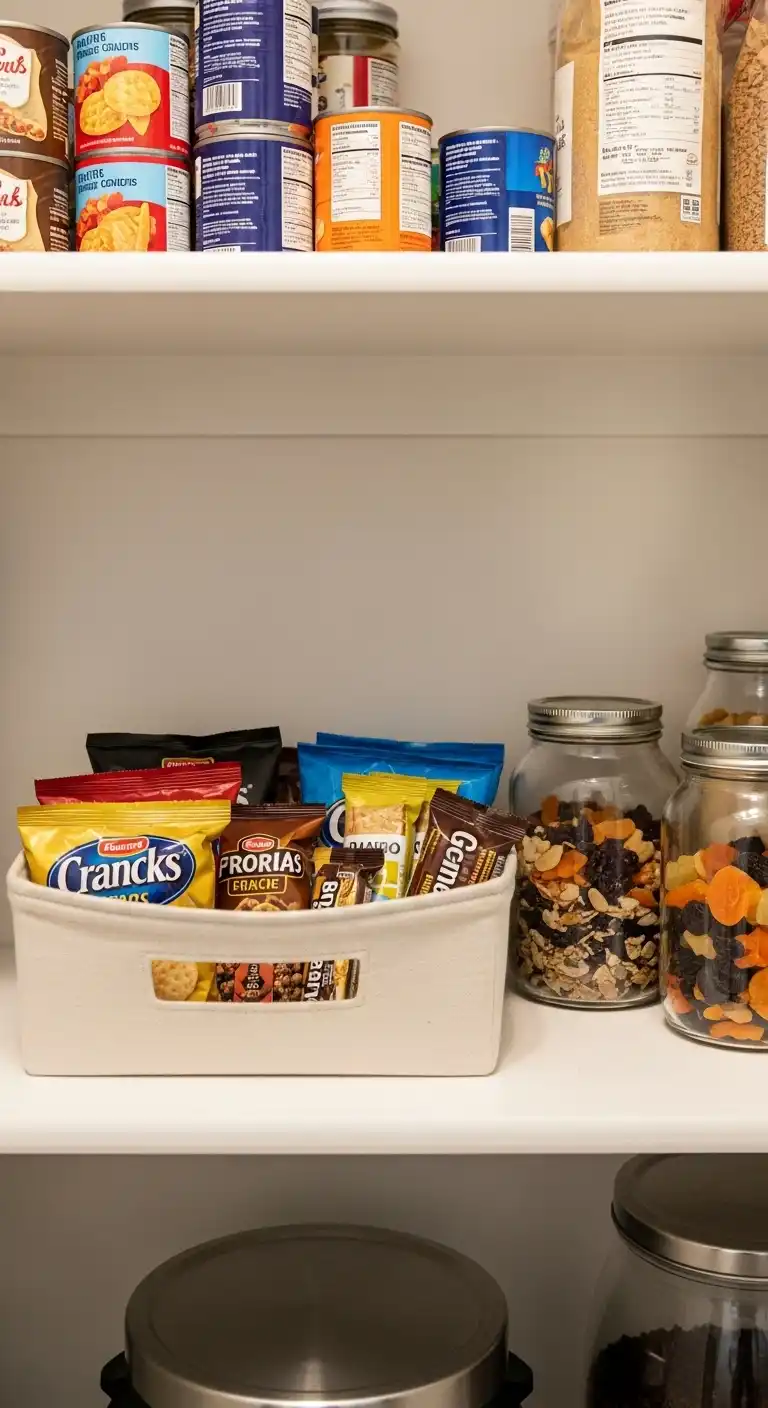
Snacks are a frequent source of pantry chaos, especially in households with children.
Creating a dedicated “snack zone” in a basket or on a single shelf is a simple way to bring order to this area.
Placing this zone at a lower, kid-friendly height is a smart move.
This system empowers children to serve themselves, fostering independence and helping with portion control.
A well-organized snack station is a teaching tool, promoting responsibility and healthier choices.
It also simplifies the morning routine, as kids can easily grab their own items for school lunches.
15. Taming the Spice Collection
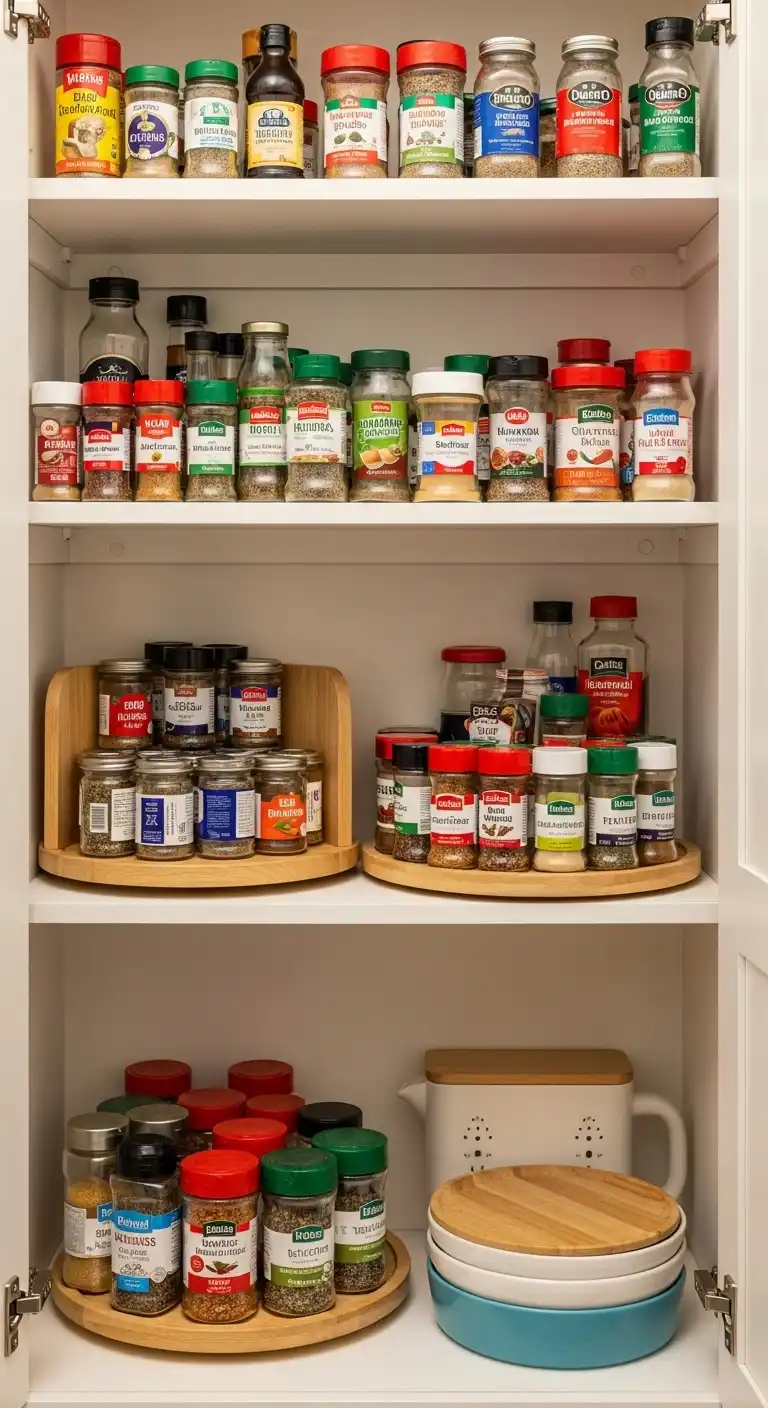
Spices are small and numerous, making them easy to lose or forget.
A simple and effective way to organize them is to group them together on a tiered shelf riser or a Lazy Susan.
A more creative DIY option is to make a wall rack from children’s bookshelves, as they are often inexpensive and perfectly sized for spice jars.
An organized spice rack allows all seasonings to be seen at a glance, eliminating the need to search through a cluttered cabinet.
When spices are easily accessible, a person is more likely to use them, which encourages more complex and adventurous home cooking.
The function of the pantry extends beyond storage; it should inspire culinary creativity.
16. Vertical Storage for Pots and Pans

Pots and pans are heavy and awkward to stack, often leading to a messy pile that is difficult to navigate.
A simple and affordable tiered organizer for pots and pans allows them to be stored vertically, on their sides.
This small purchase eliminates a daily point of frustration—digging through a pile of pans to find the right one.
It also prevents scratching and damage to cookware.
By storing these items vertically, a person can save a significant amount of cabinet or pantry space while protecting their more expensive kitchen items.
17. Group Baking Supplies
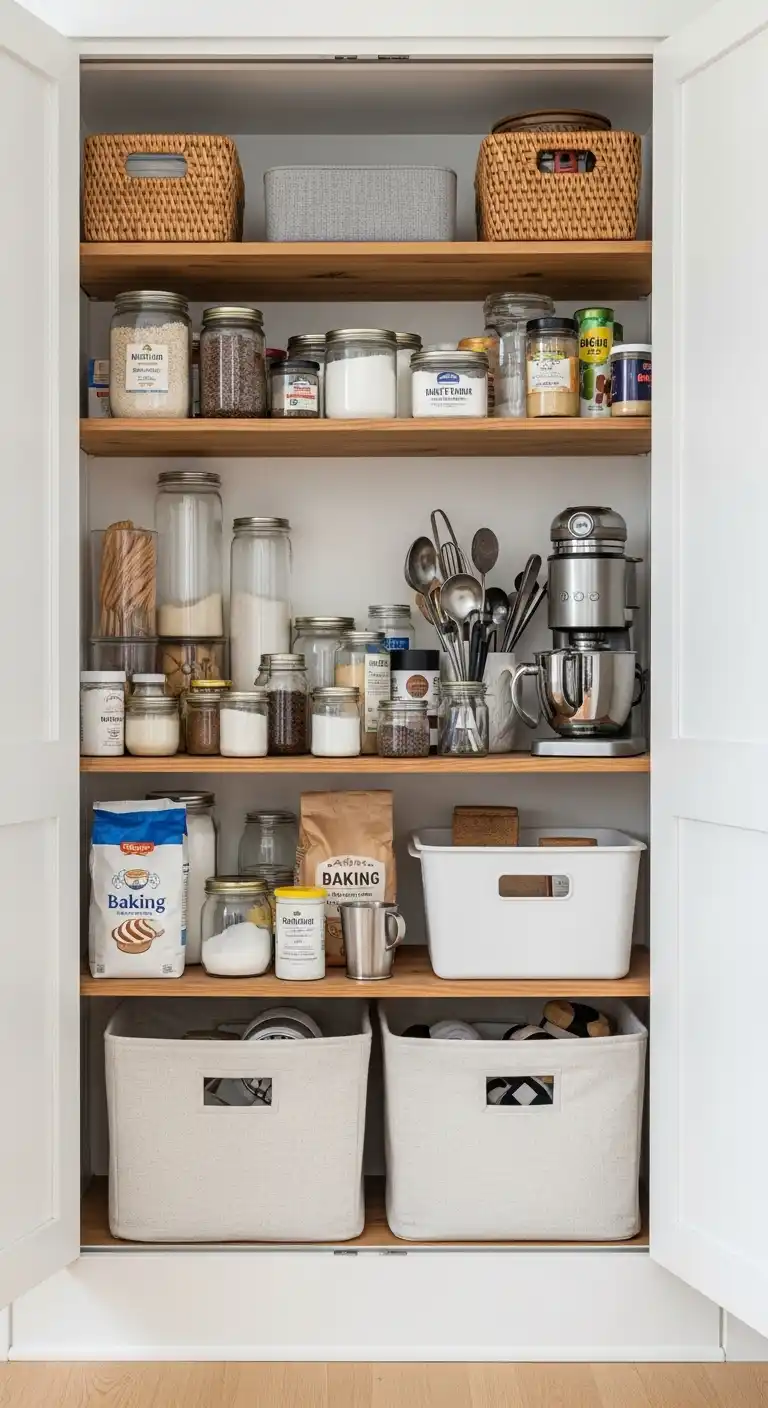
Baking often requires a specific set of ingredients, from flour and sugar to leavening agents and flavorings.
Creating a designated “baking zone” with all these supplies on a single shelf or in a large bin simplifies the process dramatically.
This organizational system is based on function, not just category.
By grouping all baking supplies together, the entire “zone” can be pulled out at once, streamlining the baking process from start to finish.
This approach reduces the mental and physical labor of a task and makes a hobby more enjoyable.
The Final Touches & Long-Term Maintenance
These final ideas are the essential finishing details that transform a temporary fix into a lasting system.
They address long-term sustainability and the small habits that make a big difference.
18. The Power of Labeling
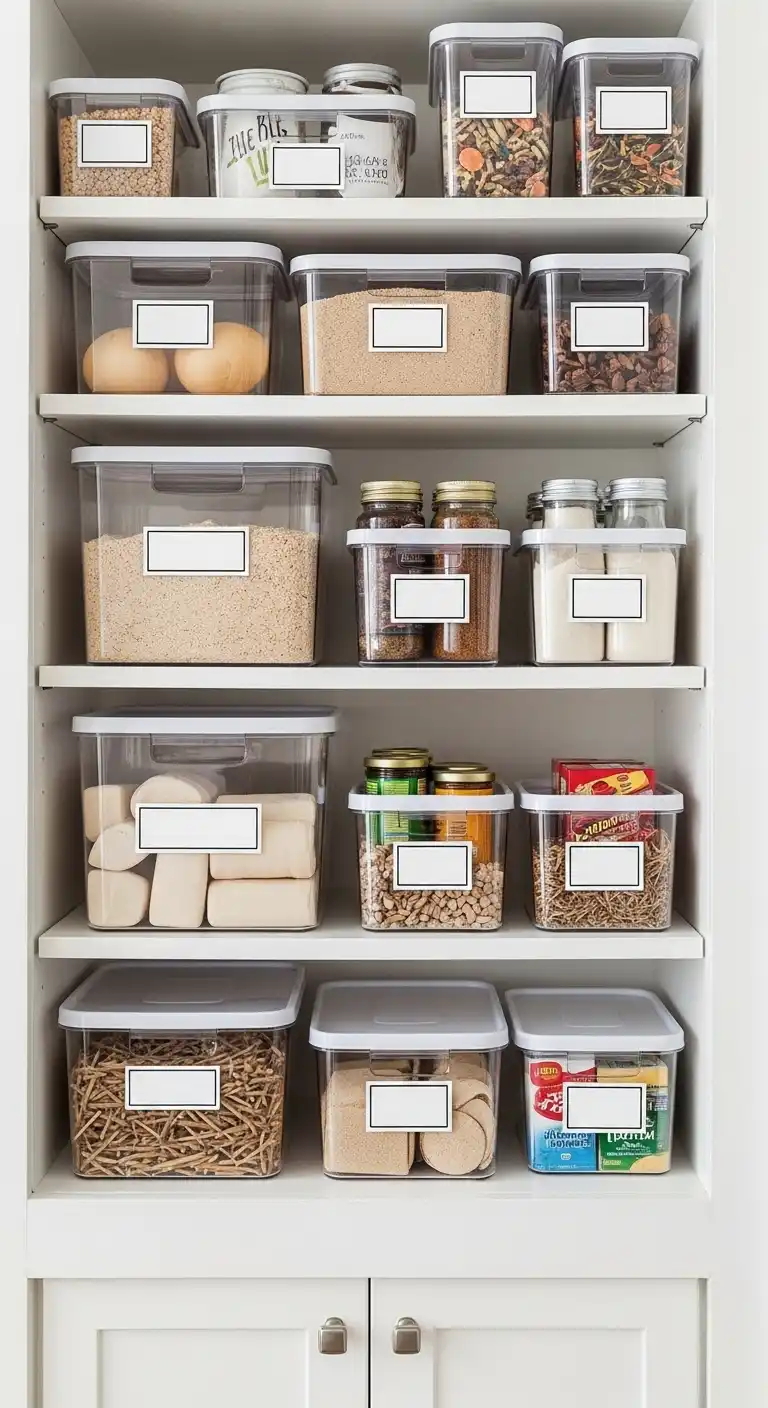
Labeling every container, bin, and basket is essential for a sustainable organization system.
Labels serve as an operating manual for the newly organized space, ensuring that everyone in the household knows where to find items and where to put them back.
Without labels, even the most beautifully organized pantry will quickly descend back into chaos. Labeling is the key to foolproof maintenance.
The system becomes easy for all family members to use, which prevents it from reverting to its old, disorganized state and secures the success of the project.
Maximize Door Space with Hooks
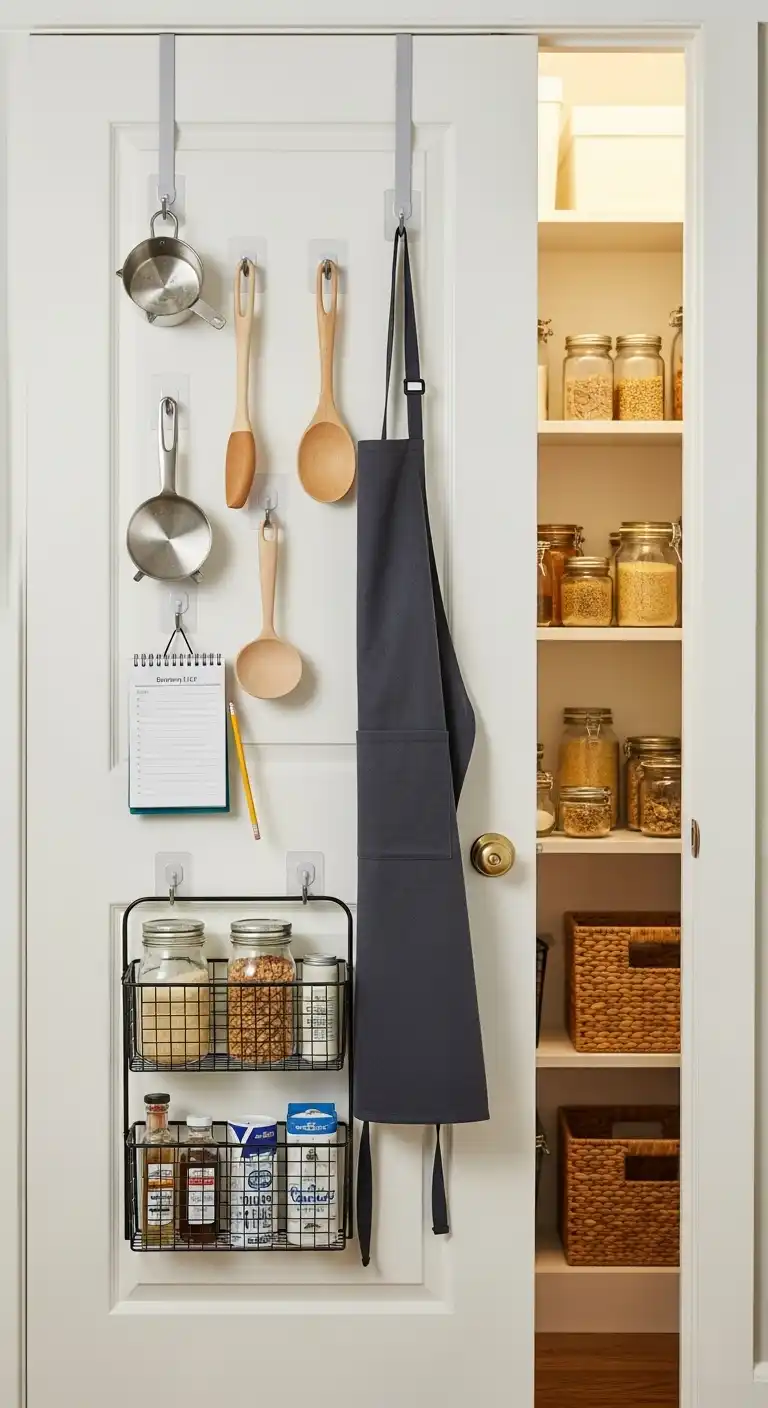
Beyond the shoe organizer, the pantry door offers numerous other storage opportunities.
Simple adhesive hooks can be used to hang frequently used items, such as measuring cups , aprons , or a grocery list.
This is a simple way to make the most of a vertical surface and move small, hanging items out of drawers and off shelves, freeing up prime real estate.
Using hooks is a small but impactful gesture that makes a daily routine more efficient and shows that every surface in the pantry is a potential storage opportunity.
19. The Front-to-Back Rule
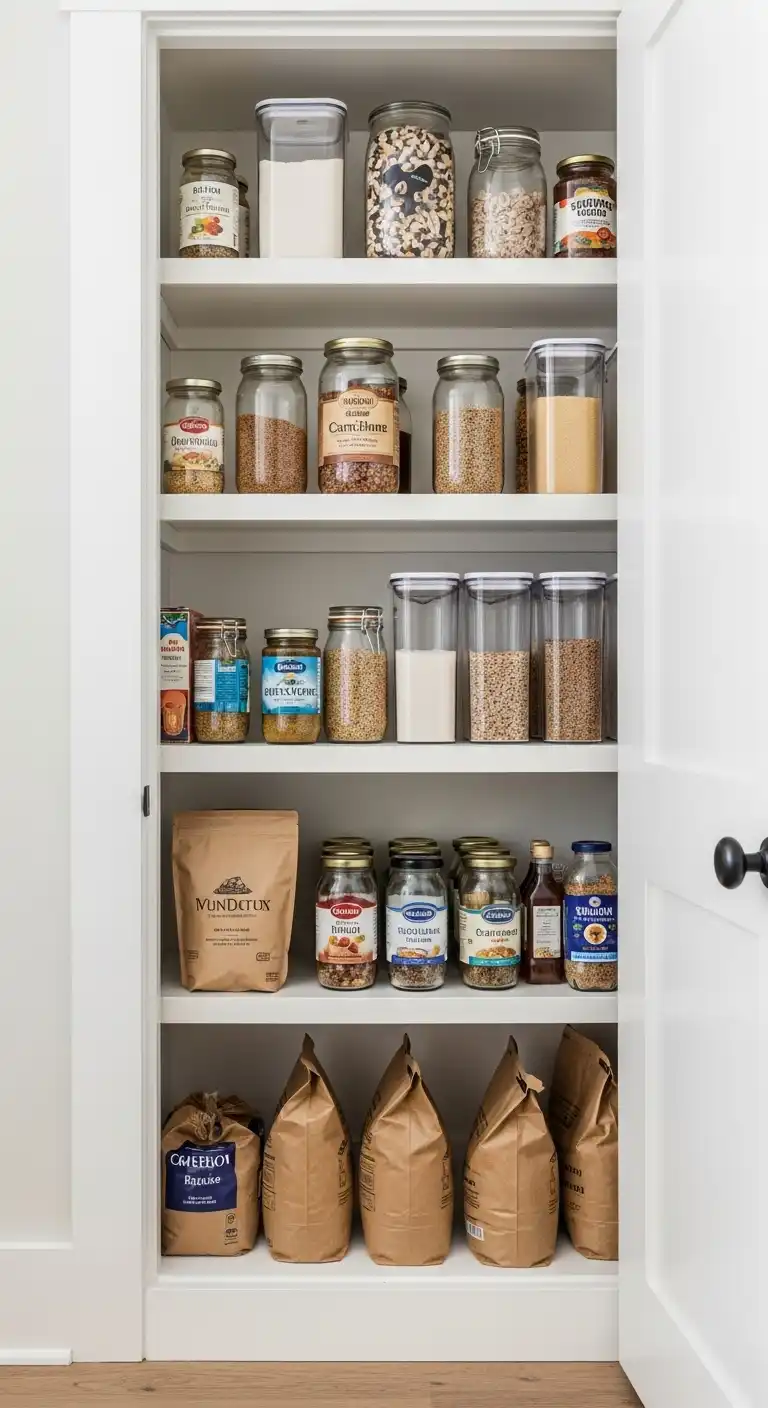
A simple, zero-cost hack for maintaining order in a deep pantry is to place shorter jars and bags in front of taller ones.
This ensures that everything is visible from the front and prevents items from getting lost behind taller containers.
This strategic visual cue makes it easy to access everything at a glance without having to dig.
This single principle, which requires no investment, is one of the most effective ways to maintain order and is a core component of a well-functioning pantry.
20. Store Heaviest Items Low

A simple but often overlooked rule is to place heavy items, such as bulk cans, large bags of flour, or cases of soda, on the bottom shelves of the pantry.
This is a simple safety tip that prevents items from falling on you or children.
Storing heavy items on the bottom also makes them easier to retrieve without having to lift them from a high shelf.
The physical arrangement of the pantry is not just about aesthetics; it is also about safety and ergonomic design, making daily tasks more secure and efficient.
21. Use Stackable Bins and Containers
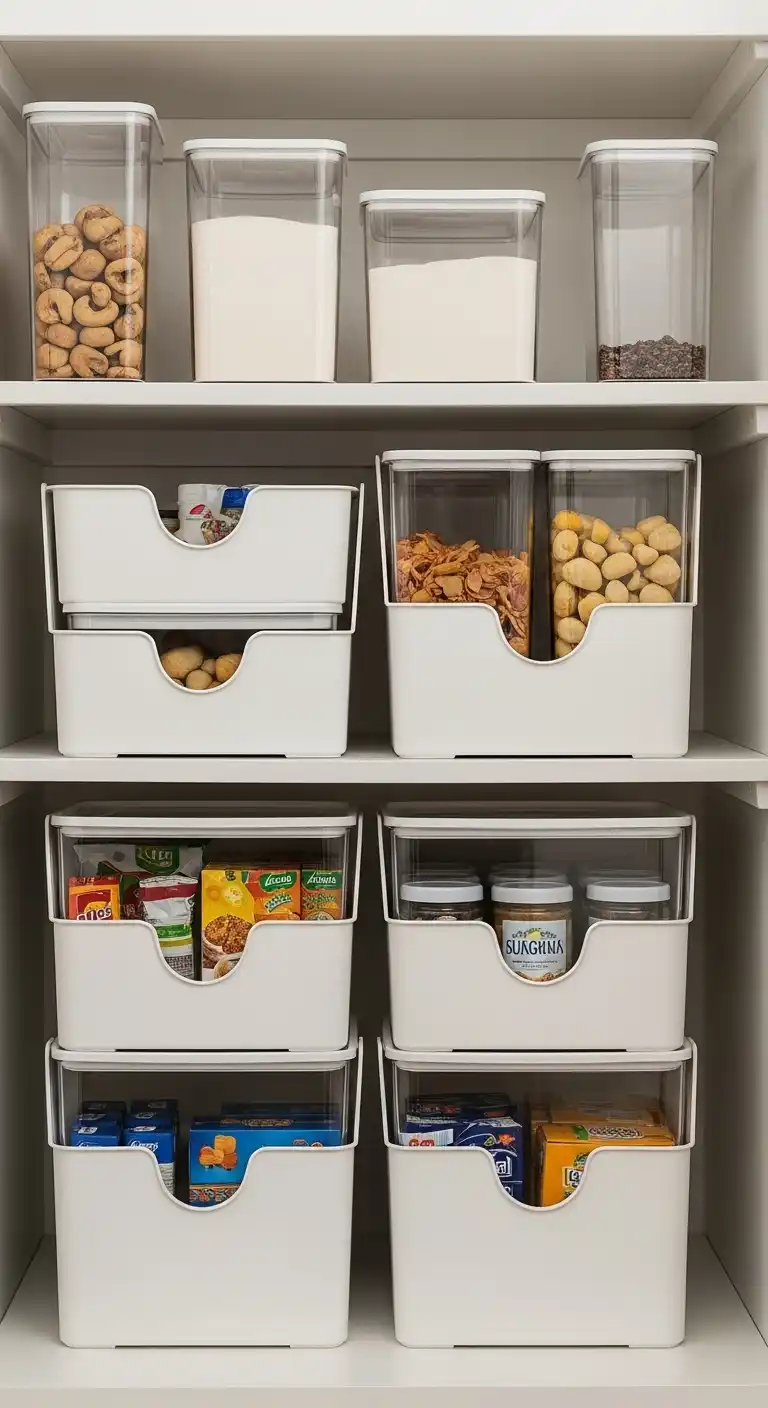
Many pantry organizers are designed to stack, allowing a person to create more storage layers and take advantage of every inch of vertical space.
Look for containers with flat lids and modular designs that can be rearranged as needed.
Stackable bins and containers are a flexible, modular system for an evolving pantry.
Their versatility means that as household needs or inventory changes, the system can be easily reconfigured.
A truly smart organization system is not rigid; it adapts to the demands of a busy household.
22. The Quarterly Reset

A perfectly organized pantry is not a one-time project; it is a habit.
No system is perfect, and without maintenance, clutter will inevitably return.
Scheduling a quarterly deep clean and reset is the ultimate final step.
This practice prevents the need for a full-blown “pantry overhaul” from ever being necessary again.
It is a time to check expiration dates, wipe down shelves, and re-evaluate the organization system to see if it is still meeting the needs of the household.
An organized life is a result of consistent, small efforts, not a single dramatic event.


